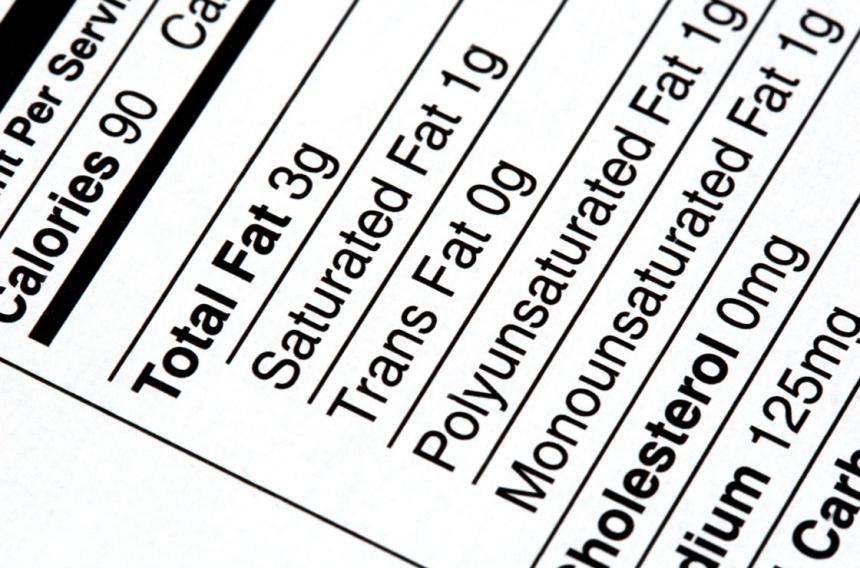Types of Fat: Good Fat vs. Bad Fat

You may already know that fats are classified as being saturated or unsaturated. It gets a little more complicated beyond these basic categories. Here’s what you need to know.
Unsaturated fat is broken into two groups – cis fats and trans fats.
Cis Fats
Cis fats are naturally occurring fats that include monounsaturated and polyunsaturated fats. There’s a chemical difference between the two, but they’re quite similar. Both fats are found in oils that generally remain liquid at room temperature but can turn into a solid in colder temperatures. And both types of fat help lower LDL (the so-called bad cholesterol) levels, provide nutrients to cells and contain vitamin E.
Olive, canola, peanut, safflower and sesame oils are good sources of monounsaturated fats, as are avocadoes and many types of nuts.
Polyunsaturated fats are a little more complicated because they’re broken down into omega-3 fatty acids and omega-6 fatty acids. Omega 3s are essential fatty acids; this means your body needs them but doesn’t produce them — you must get them from food. Omega 3s are credited with lowering triglyceride levels and inflammation, alleviating rheumatoid arthritis, depression, asthma and ADHD and protecting against memory loss. You can find these fats in foods such as anchovies, salmon, bluefish, mackerel, tuna and herring. (There are plant sources, such as chia, flax and hemp seeds, Brussel sprouts and walnuts, but these aren’t as good as fish sources.)
“Omega-3 fatty acids are very important to your health,” says Bernard Kaminetsky, MD, medical director, MDVIP. “I advised many of my patients to eat foods with omega-3 fatty acids every day.”
Omega 6s are also essential fatty acids that help maintain bone, brain and reproductive health, regulate metabolism and stimulate hair and skin growth. Omega-6 fats are found in vegetable oils like sunflower and soybean. Too many omega 6s can trigger inflammation and health problems, which is why it’s important to balance the types of fat in your diet.
It’s not easy. The typical American diet consists of 14 to 25 times more omega-6 fatty acids than omega-3 fatty acids, according to the University of Maryland Medical Center. We use a lot of omega-6 rich vegetable oils such as sunflower and corn to cook with, and soybean oil is a common ingredient in many processed foods.
“I often recommend the Mediterranean diet to patients. The foods on the diet naturally balance out the fats,” Kaminetsky says.
In addition to vegetable oils, good sources of omega 6s are poultry, eggs, pistachio nuts and pumpkin and sesame seeds. Durum wheat and some whole grain breads and cereals are also good sources.
Trans Fats
Trans fats are also naturally occurring unsaturated fat; small amounts can be found in animal products. Not enough research is available to determine their effects on our health.
But many people confuse trans fats with trans fatty acids, an artificial fat created by adding hydrogen to vegetable oil to make it solid – think shortening or margarine. For many years trans fats were considered a healthier alternative to saturated fat. And since trans fatty acids are inexpensive to create, improve texture of food and have a long shelf life, manufacturers began adding them to many processed foods, particularly baked goods, snack foods and spreads.
However, research conducted during the 1990s found that trans fatty acids raised LDL (bad cholesterol) and lowered HDL (good cholesterol), making them even more dangerous than saturated fat in terms of heart disease. Some studies also suggest that trans fatty acids raise the risk of diabetes. In response, the FDA began requiring trans fatty acids to be listed on nutrition labels in 2006 and determined partially hydrogenated oils (the primary dietary source of trans fatty acids) were no longer classified as Generally Recognized as Safe (GRAS) in late 2013.
Saturated fat is the type of fat that’s solid at room temperature. Butter and coconut oil are examples. It’s gotten a bad rap over the years as a leading cause of cardiovascular disease because it can raise your cholesterol level.
But results of recent studies have downplayed the role saturated fat has in cardiovascular disease. And some experts even credit saturated fat with health benefits such as helping maintain brain health, neurological functioning and strong bones.
“For years many of my patients swore off butter because of the saturated fat. Now, some butter, particularly grass-fed butter, in moderation can be healthy, as it has fat soluble vitamins and healthy saturated fats,” says Kaminetsky.
What’s the bottom line? Until more research confirms the connection between saturated fat and heart disease, limit your intake. Aim for five to six percent of your daily calories to come from saturated fat, according to the American Heart Association. If you’re eating a 2,000-daily diet, it equals about 120 calories or 13 grams of fat. Good sources of saturated fat include whole-fat dairy products, red meat and poultry.
It’s always best to consult your primary care doctor before making any dietary changes. Looking for a primary care physician? Physicians in MDVIP-affiliated practices can customize a wellness plan for you that includes preventing and controlling heart disease. Find an MDVIP affiliate near you and begin your partnership in health »


